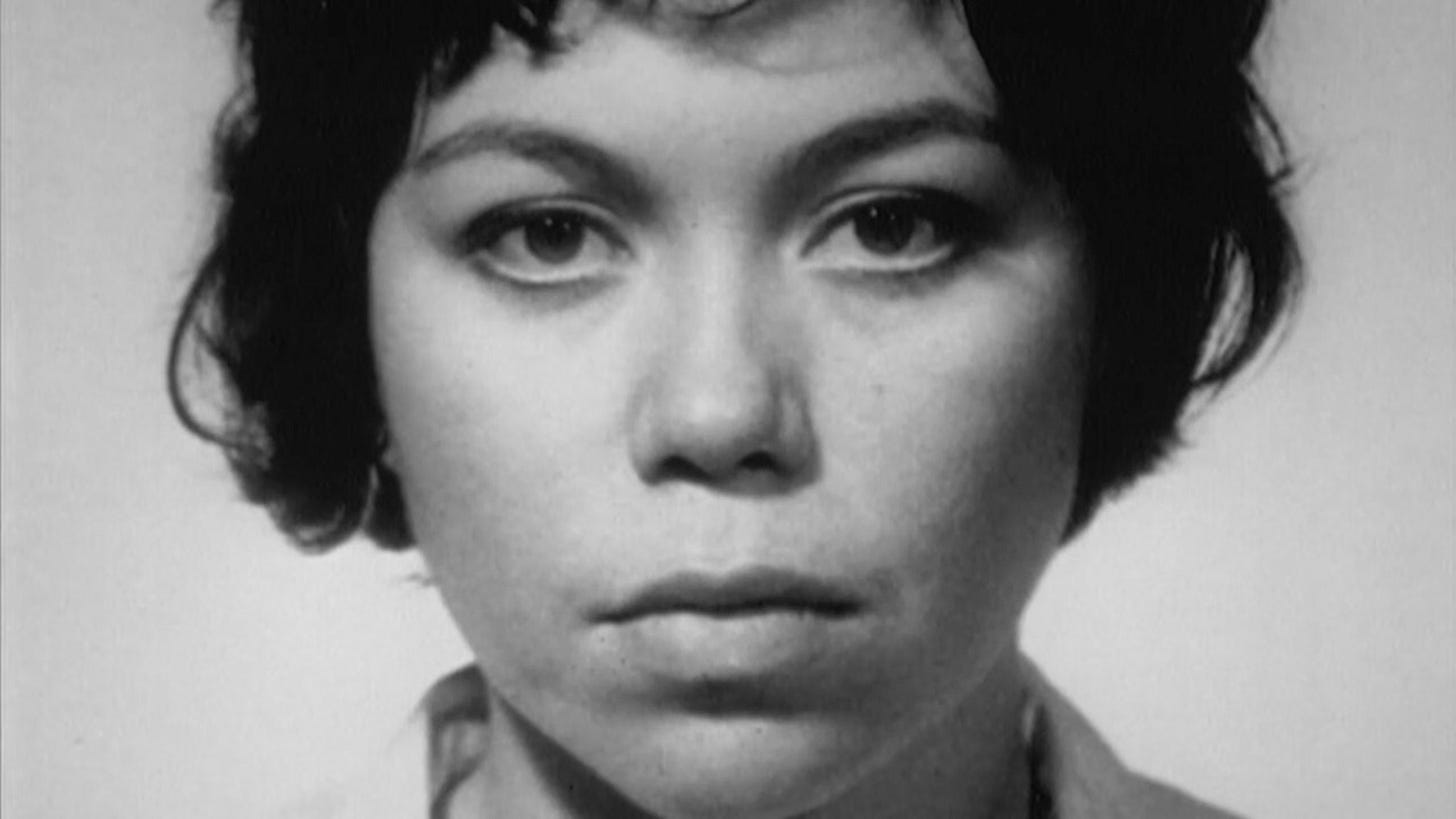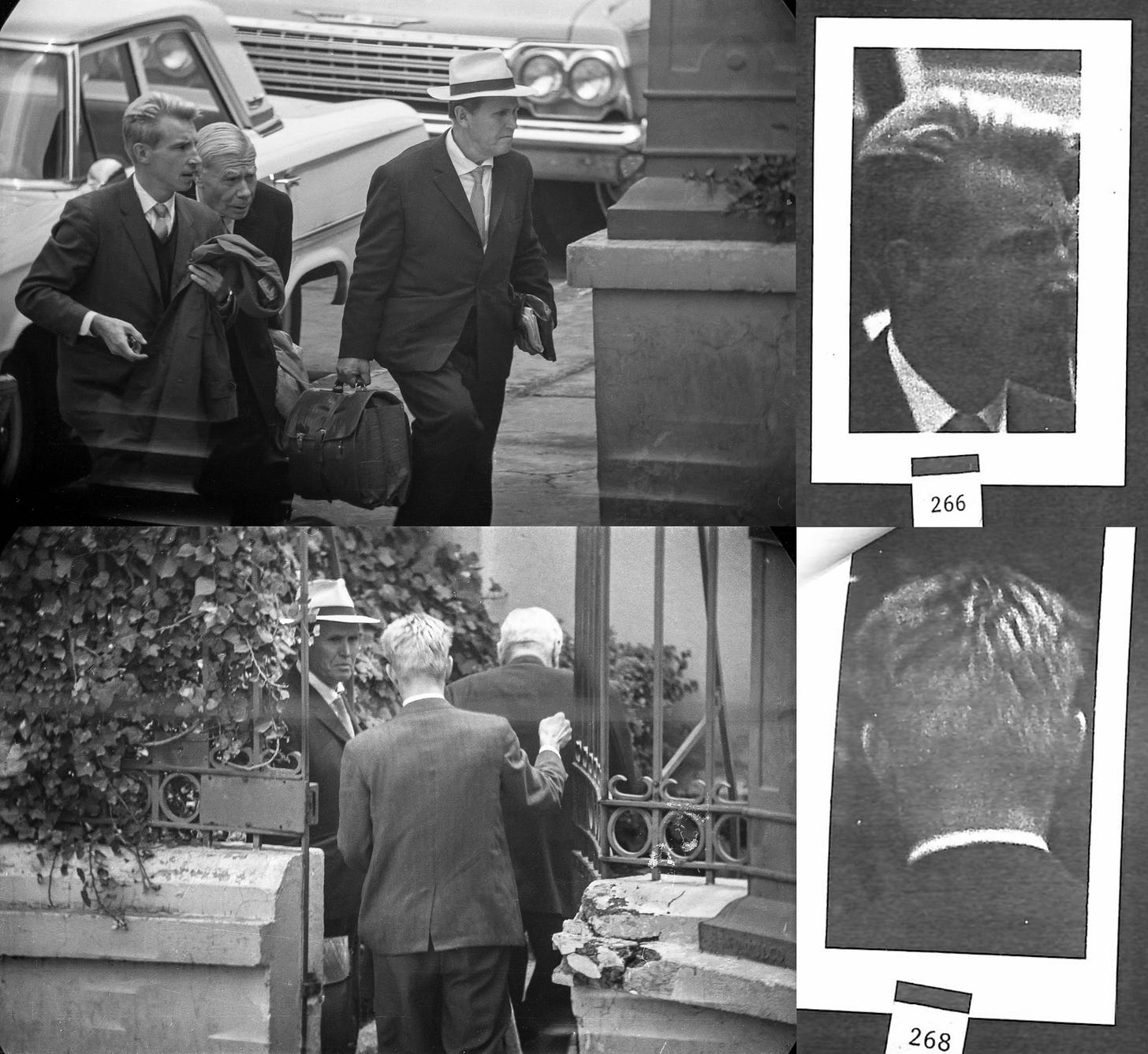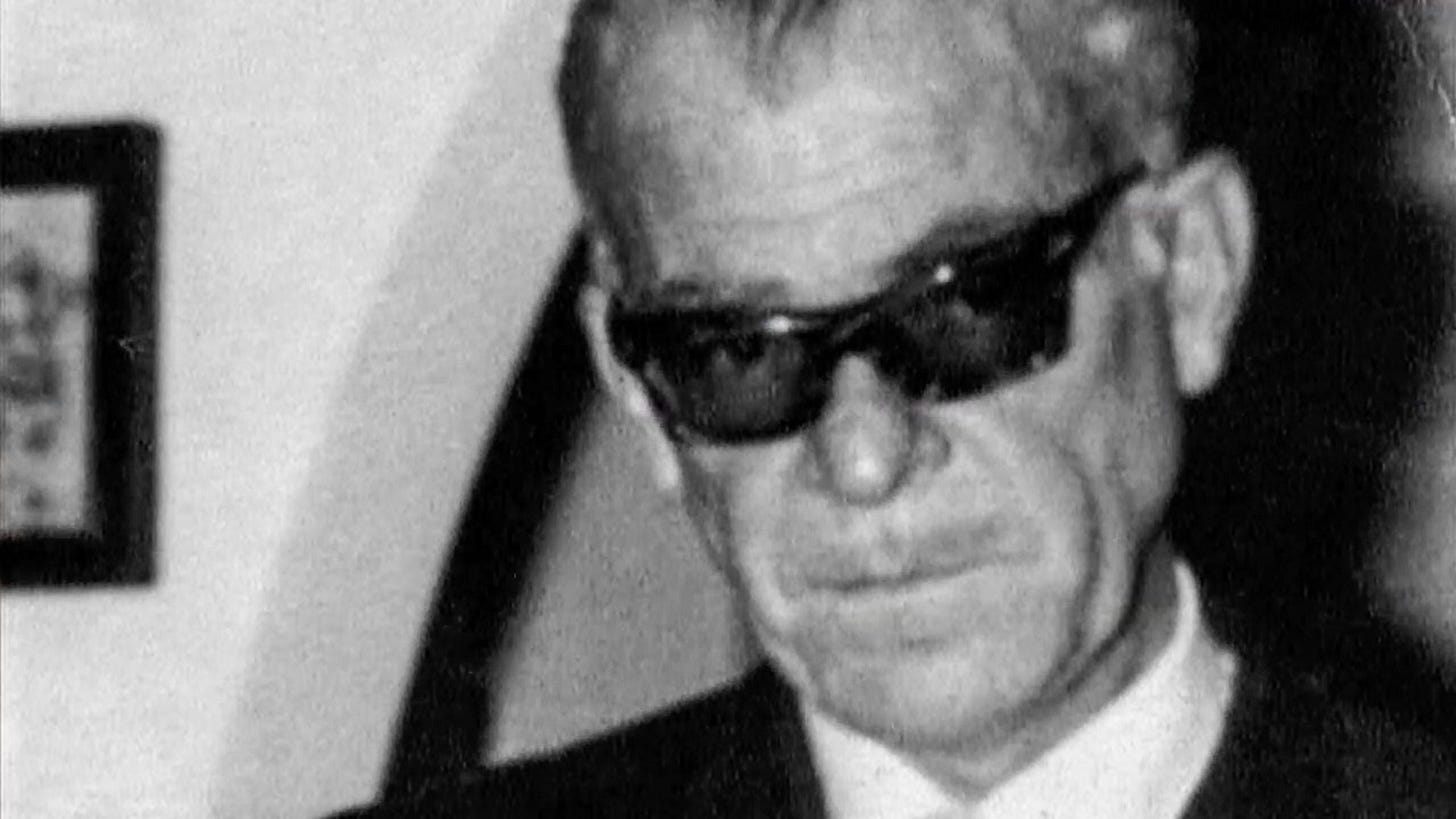Oswald and the KGB — Part V
The Cuban consular officials who supposedly came face to face with Lee Harvey Oswald in the fall of 1963 actually interacted with someone else.
In 1978, the House Select Committee on Assassinations (HSCA) interviewed three Cuban Consulate employees who confronted “Oswald” in person on Friday, Sep. 27, 1963: outgoing consul Eusebio Azcue Lopez, secretary Sylvia Tirado de Duran, and incoming consul Alfredo Mirabal Diaz. Taken together, their testimony shows that the man kicked out of the consulate wasn’t the one Jack Ruby shot to death on Nov. 24, 1963.
The Outgoing Consul
On Apr. 1, 1978, six HSCA representatives interviewed Eusebio Azcue in Havana, Cuba, including three congressmen — Chairman Louis Stokes (D-Oh.), Christopher Dodd (D-Conn.), and Richardson Preyer (D-N.C.) — along with chief counsel G. Robert Blakey, Gary Cornwell and Ed Lopez. They asked Azcue if the man in the photo looked like the man he had encountered in his Mexico City office:
See the impression I got was that in person he was thinner, his nose was more angular, angled, or aquiline. His eyebrows were very straight. He had a very cold look. It was a penetrating, cunning way of looking at you.
Azcue estimated the visitor’s height at “around five feet six, five feet seven,” and again, “very thin, with a very aquiline nose.” He looked like “a 35-year-old man” with “a sort of wasted face, you know, he had a gangster looking face, a hard face.”
Later, Azcue said: “You know, he had blond hair.”
“The truth of the matter is that I remember him differently,” Azcue commented on the visa application photo. “The impression that I have is that he was a very thin man with a very hard face — a tough expression.”
“Well, I would say he’s about 28 to 30,” Azcue said about the man in the visa photo. “But the man I remember as having visited the Embassy was over thirty-five years old.”
Immediately after he saw Oswald on TV and in media, Azcue had registered his doubts to his own government.
Blakey: You said that you did not recognize the man when you saw him in the photos and on TV?
Azcue: That is correct. I noticed some differences. I said, “Damn, this is not the man. This does not look like the man who went to my office.”
Blakey: Did you bring that difference to the attention of anyone else?
Azcue: Yes, I did — with comrades, you know, from the ministry.
Azcue then said he brought up the discrepancies several years later, again noting the “bothered and hard” or “tough” face he had confronted “face to face” in the consulate.
Azcue: This man has a soft face, even to his death. Even in his death he has a passive look. It’s a subjective opinion. Let me tell you. Months later, or maybe years later, I heard the mayor of New Orleans …
Blakey: You mean the prosecutor in New Orleans, Garrison.
Azcue: Yes, that’s right, Garrison. He began an investigation and he said there were two Oswalds. Then my theory was, you know, reaffirmed. That gave credence to my theory that the man that was assassinated and the man that visited me were different persons.
In September 1978, in an HSCA hearing on Capitol Hill, Azcue said exactly what he had said in Havana: he had “a clear mental picture” of the man who had appeared in the consulate, and he didn’t recognize Oswald as that man. Asked again about the visitor’s height, Azcue said he “was probably around five feet six, five feet seven.”
“I’m over six feet tall,” he said. The “Oswald” shot by Ruby was between 5’9½” and 5’11”.
HSCA investigators told Azcue that Sylvia Duran had “expressed no doubt” that the man killed in Dallas was “the individual who visited the consulate.” Azcue said he couldn’t “categorically” confirm it “without any doubt,” but he thought Duran might have been “more susceptible to impression or more impressionable than I.”
“I remember what I saw on the film and also what I saw on TV later or maybe before. I remember that moment when he was killed and I remember I did not recognize him. I did not have any prejudices or preconceptions.”
Describing Sylvia Duran as his “very good friend,” Azcue spared her honor while never denying his own impression and continuing to vouch for his own memory. His “own profession” meant he “probably had better eyes,” and his “version is correct or more correct” than hers. Fifteen years after the assassination, the man who had confronted “Oswald” in a hostile, face-to-face shouting match in his office in Mexico City still insisted that the man he ordered out of his consulate wasn’t the man accused of killing JFK.
The Secretary
On Jun. 6, 1978, four HSCA staffers interviewed Sylvia Tirado de Duran, secretary at the Cuban Consulate in Mexico City in September 1963. She was now known through remarriage as Sylvia Tirado Bazan, but for simplicity’s sake, we’ll call her Sylvia.

When the HSCA investigators asked Sylvia about Oswald’s first visit, she said she couldn’t remember whether he showed her any documents, even his passport. She only said he asked about going to the U.S.S.R via Cuba. She told him he needed a Soviet visa to obtain a Cuban transit visa, and he would need passport photos to attach to his application. That was all Sylvia could remember from the first visit, which was very brief.
On the second visit, she said, he gave her his passport photos, and she typed up the application in duplicate. Then her HSCA questioner asked if anything else happened.
No, but I told you, it’s uh, he said that he was a friend of the Cuban Revolution. He show me letters to the Communist Party, the American Communist Party, his labor card, and uh, he’s working in Russia, I don’t remember exactly, but he said on his application, his license number …
In other words, the visitor only showed her all his documents on the second visit. Sylvia’s questioner later asked her if anything else happened on this “second occasion.”
No. It was strange. I mean because if you are a Communist and you’re coming from a country where the Communist Party is not very well seen, and in Mexico City that the Communist Party was not legal at that moment — crossing the border with all of his paper, it was not logical. I mean, if you’re really Communist, you go with anything, I mean just nothing, just your passport, that’s all. And that was something that I didn’t like it but …
Sylvia was suspicious about the amount of documentation and asked the visitor what he was doing “with all of this.” She said he replied, “to prove I’m a friend of yours.” Then, asked whether she discussed her suspicions with anyone else, she said she went to talk to Azcue. However, that discussion with Azcue only occurred on the third visit.
Likewise during this third visit, “Oswald” had the argument with Azcue. A big scene erupted, with shouting and screaming so loud that passers-by in the street outside could have heard everything. It culminated with Azcue ordering the visitor to leave.
When asked to identify Oswald in an HSCA “mug book,” Sylvia correctly picked out photo number 57. But the discussion then took a strange turn. Gary Cornwell reminded her that the first time she saw Oswald in the book, she “indicated that that looked like him,” but that as she recalled, “he had either blue or green eyes and blond hair.”
Sylvia: Yes.
Cornwell: When you say blond hair, what color is that? Is it very light?
Sylvia: Light.
Cornwell then tries to find an example of blond hair in another book containing heavily cropped CIA surveillance photos in the vicinity of the Soviet and Cuban embassies.
Cornwell: All right. Looking in the second book, uh, take as an example, number 266 or 268, would that be what you recall to be the color of his hair, blond?
Sylvia: Yes. Here it looks very, very light, not that light.
Cornwell: Okay. That would be what you describe as blond but your memory is that it was close but not quite as light as that?
Sylvia: A little lighter than your eyebrows.
Cornwell: A little lighter than my eyebrows? There’s another photo… In another book, number 26 or 27. You also pointed to those photos when you went through the book. Would the color of that hair approximate the way you remember it?
Sylvia: No, because he had very light, almost white…
Gary Cornwell was 33 years old at the time, and while photos of him from 1978 are elusive online, more current pictures indicate a fair haired man whose eyebrows might have qualified as “sandy blond” back then.

But the photos showed to Sylvia and numbered 213, 266 and 268 corresponded to KGB officer Nikolai Leonov, captured by CIA photographic surveillance on Wednesday, Oct. 2. Sylvia’s questioners singled out Leonov for attention.
Cornwell: Do you recognize the man in photo 266? Yes, that’s the one I want. 266?
Sylvia: No, he looks like Russian.
Cornwell: Do you recognize the man in 265?
Sylvia: No.
Cornwell: Do you recognize the man in 213?
Sylvia: No. You’re not going to tell me who’s that man?
Cornwell: Not right now. [Laughter] But maybe later.
Leonov could have been a Caucasian of any nationality, and since the photos were heavily cropped, Sylvia had no way of knowing they were taken as Leonov was entering the Soviet Embassy. How did she know “he looks like Russian”?


Asked about the visitor’s height, Sylvia said he was “about my size” and “skinny.”
Lopez: Okay. And what’s your height?
Sylvia: 160. I think 160 or 162.
Oswald was skinny, but Sylvia estimated that the visitor’s weight was “more or less” the same as Lopez’s, and Lopez said he weighed “119 pounds.” Oswald’s Marine Corps discharge papers recorded his weight at 150 pounds in 1959. While he could conceivably have dropped 30 pounds in four years, 160-162 centimeters is between 5’3” and 5’4”. That could not have corresponded to the man shot to death by Jack Ruby.
Giving Sylvia the benefit of the doubt, she probably had no idea how tall the man paraded around a police station for the TV cameras was. All she could see was someone visibly shorter than the tall, Stetson-sporting Dallas police detectives caught on film with him. She likely saw no conflict between 5’3” and the real height of Lee Harvey Oswald.
Finally, Sylvia told the HSCA that she didn’t hear the name “Lee Harvey Oswald” in connection with the assassination until the evening of Nov. 22, 1963. She heard that JFK had been shot when she returned to the consulate after lunch, but she only made the connection to the Sep. 27 visitor when she heard co-workers talking about him, “married to the Russian woman and he live in Russia, and things like that.” She didn’t see Oswald’s face until the next day, when it appeared in the newspapers.
The Incoming Consul
On Aug. 26, 1978, Blakey, Preyer and Lopez interviewed Alfredo Mirabal Diaz in the Riviera Hotel in Havana. He had arrived in Mexico to take over as consul on Sep. 2, and Azcue was assisting with the transition. Mirabal never mentioned to the HSCA that he was a G-2 officer at the time of Oswald's alleged visit and even said he knew of no “security officers” attached to the embassy at all. That was Mirabal’s first lie.

Blakey asked Mirabal to describe Oswald’s appearance when he first saw him. He said he did not have a “clear cut image of him at that time,” but he said he looked about 30.
Blakey: Could you tell me what kind of build he had? Was he slight, muscular?
MIrabal: He was rather light, not very broad-shouldered but rather light and narrow build. I think the head was not a kind of round head, but rather narrow. And the man was rather small.
Mirabal couldn’t describe the visitor’s eyes or complexion; he just said he was aroused by what sounded like an argument and went out to take a look before going back into his office and sitting back down. But he did say, “I remember comparing him with Azcue. He was rather small and narrow, a very grave face, a serious face.”
Blakey then wanted to know what Azcue told him about the confrontation. Mirabal said, “Oswald showed a Communist Party card” and “a card of the Fair Play for Cuba Association.” But the visitor didn’t show them to Mirabal. Azcue did, when he brought them into Mirabal’s office. Mirabal may have heard “the demanding and angry way” the visitor “said he wanted a visa” and “was being persecuted,” with “no money to keep himself in Mexico.” But Mirabal never dealt directly with the visitor.
When Blakey asked Mirabal whether he was sure that the person who had visited the consulate was the same man he saw killed on TV, Mirabal answered:
Well, when the first pictures came in the newspapers, the following day after the assassination, there was not even on the part of Sylvia Duran or on my part anything that told us that it was not the same person. We did not enter into a discussion whether it was the same person or not, we did not make that decision.
Strangely, Blakey changed the subject instead of pinning Mirabal down on whether the visitor was the same person killed on live TV. But later the subject turned to when Mirabal first learned of JFK’s assassination. He said Duran “was the one who gave me the news.”
She communicated first that he was assassinated, then I put on the radio. Sometime later she herself came again and she told me that the name that the radio had given as the assassin was the same name of that person who went to the Embassy requesting a visa. Because the thing is that she handles everything, the papers, and she had to write up for sometime, different times, the name, so she recalled it. And she remembered the name.
In other words, the name “Oswald” — not his appearance — had jogged Sylvia’s memory. She said the name was the same as the visitor’s; Mirabal simply went along with it.
Mirabal said the visitor wasn’t “humble” in his requests but “rather demanding,” which was “rare,” “strange” and “like a kind of provocation.” A “provocation” is something intelligence operatives — not mere civil servants like Sylvia — are trained to detect.
In September 1978, when the HSCA interviewed Mirabal in Washington, he gave a repeat performance of his interview in Havana. Again, he said he saw the visitor only briefly, poking his head out a few times to see what all the commotion was about. He couldn’t engage with the visitor because he didn’t speak English. He left it all to Azcue.
But MIrabal repeated “provocation,” saying, “from the very first moment it appeared to me as if this instance could be a case of provocation.” Then twice in his closing statement: “my impression from the very first moment was that it was in fact a provocation,” and “I must say that from the very beginning I considered this a provocation.”
In sum, a Cuban intelligence officer stressed to the U.S. Congress that the “Oswald encounter” on Sep. 27, 1963, was not merely a case of a disaffected American loner desperately seeking a visa to the Socialist Bloc. Mirabal had perceived it as something more, perhaps a penetration or infiltration operation. So did the Soviet KGB officers who recounted the episode (less than honestly) for posterity.
So what happened? The next installment of “Oswald and the KGB” will explain.
[The final part of the six-part series, “Oswald and the KGB,” can be read here.]



